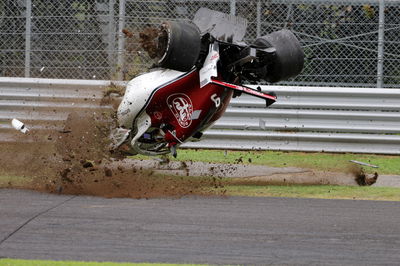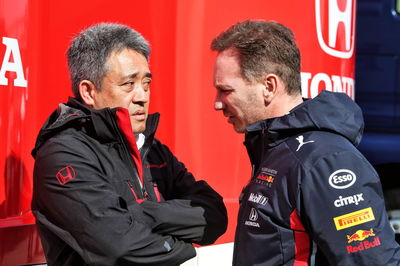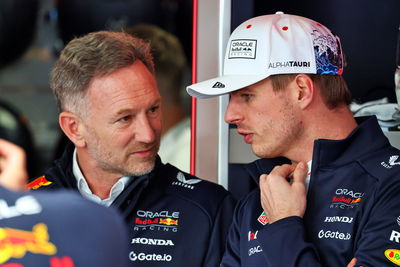Formula 1 Drive to Survive review: Can F1 capture Netflix?
As part of the growing number of 'fly on the wall' documentaries looking inside elite sports teams, such as the New Zealand rugby union team or football clubs like Manchester City and Sunderland, it was only a matter of time until Formula 1 piqued producers' interest.
A senior F1 source revealed to me last year that there were two offers on the table for the sport: one from Netflix, and a more lucrative offer from Amazon.

As part of the growing number of 'fly on the wall' documentaries looking inside elite sports teams, such as the New Zealand rugby union team or football clubs like Manchester City and Sunderland, it was only a matter of time until Formula 1 piqued producers' interest.
A senior F1 source revealed to me last year that there were two offers on the table for the sport: one from Netflix, and a more lucrative offer from Amazon.
So why go with Netflix? The thinking is simple: people who subscribe to Netflix do so purely to watch shows and documentaries. They're guaranteed to be possible viewers. Given Amazon's streaming service is an addition to its one-day delivery service, the same would not have been true had F1 gone down that route.
That surmised F1's approach towards its first venture into an external digital project. It wanted to do something that would reach a new fanbase and help expand its audience, a challenge Liberty Media has wrangled with since picking up the sport in early 2017.
And frankly, this seems to be the most positive step made yet.
The title of the series - Formula 1: Drive to Survive - sets the tone for much of the series. Plenty of screentime is given to high-speed crashes and dramatic moments from the 2018 season, including Marcus Ericsson's crash at Monza, the Red Bulls' collision in Azerbaijan and Nico Hulkenberg's flip in Abu Dhabi. It may seem a little overplayed to F1 fans, but for the casual viewer, incidents like these and the dangerous nature of the sport is part of its appeal. So to hook around this is perhaps expected.
The series does an excellent job at highlighting many of the stories from up and down the paddock with plenty of behind-the-scenes access. Daniel Ricciardo's move away from Red Bull is set against the souring of relations between the team and Renault, resulting in some intriguing moments between Christian Horner and Cyril Abiteboul. The needle between them we saw at moments during press conferences last year is only given more exposure in this for us to enjoy in excruciatingly awkward detail.
Red Bull gets a huge amount of screentime through the series. It's not until the fifth episode Red Bull isn't one of the teams in the spotlight, with the shift away from the team feeling slightly refreshing. Ricciardo stands out as the star from the series, given the perfect platform to display his humour and character. Particular highlights include a song about his scrotum - yes, really - and his last appearance in the series, which acts as the final line of the season.
The other stand-out figure of the series? Haas F1 team principal Guenther Steiner. Steiner is a brutally honest figure when discussing Haas' fortunes, particularly when Romain Grosjean goes through his early-season struggles. Whereas most team bosses would have closed up or stuck to a very PR-savvy line when defending a driver, Steiner airs his thoughts, making clear in sweary terms that Grosjean's spate of crashes cannot go on. It's a really good into the world of running an F1 team both for newcomers and ardent followers of the sport.
Red Bull and Haas do appear to get the lion's share of coverage across the 10 episodes. Renault and Force India - the latter getting two episodes of focus - appear quite a bit, while McLaren is also covered well during its summer of changes. But Toro Rosso, Sauber and Williams get very minimal coverage. Williams' appearance over the Monaco Grand Prix acts as more of a scene-setter for Lawrence Stroll's takeover of Force India that is covered in a later episode. Drivers such as Sergey Sirotkin, Brendon Hartley and Stoffel Vandoorne are hardly mentioned.
The absence of Ferrari and Mercedes from the series has already drawn criticism, and while it would have been good to see some of the most famous names in F1 appear, it actually works nicely to have the focus placed elsewhere. The success of Lewis Hamilton and Mercedes is noted, so it's not like they're erased completely. It would be good to see what is possible for the planned 2019 series if both teams jump on-board with the project.
The way in which the series is tied together deserves a huge amount of praise. Commentary cuts across the BBC, Sky and Channel 4 help to tell the story, as does the use of two journalists to explain some details in F1 that a newcomer to the sport may not otherwise understand. Everything is covered in a way that never feels like you are being talked down to, though - a key balance that has been struck very well indeed. There will be some inconsistencies the more pedantic fan (myself included in this) will pick out, such as Charles Leclerc's move to Ferrari being portrayed as something that was confirmed post-Singapore, when it was announced in the lead-up to the race.
All in all, though, the series did an excellent job given the constraints of lacking the two biggest teams and drivers of showing what life in the paddock is like. The videography is beautiful, making it a real, real treat to watch as well.
Can this be the magic bullet to get more people interested in F1? It certainly has the potential to be. Football clubs such as Sunderland and Manchester City saw surges in popularity following the success of the series on them in the past couple of years. If F1 can see a similar uptake in interest, this may yet go down as the most successful move yet from the sport's new management to expand its fanbase and attract a new raft of fans.











